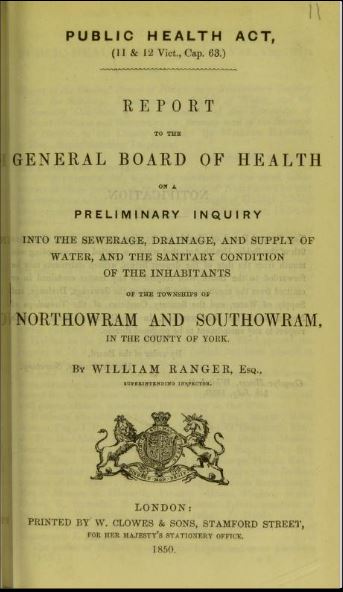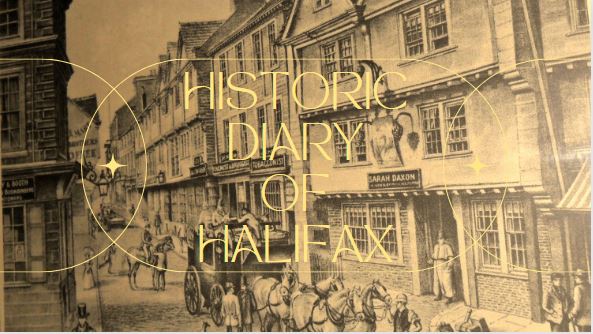
Halifax Diary - February 5th
In 1974, several local buildings with special architectural and historical interest were added to the list by the Department of Environment.
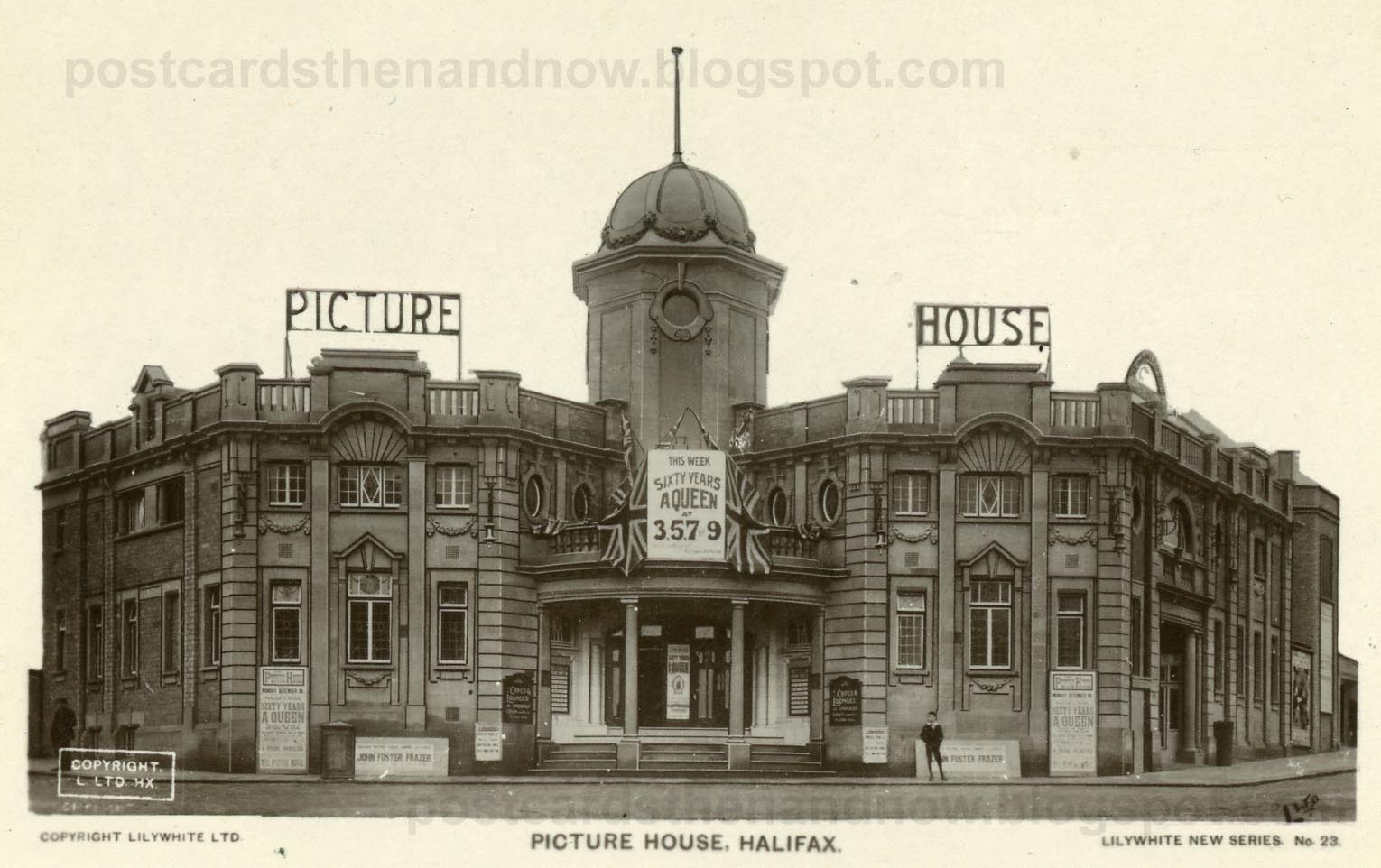
In 1968, this photo was taken.
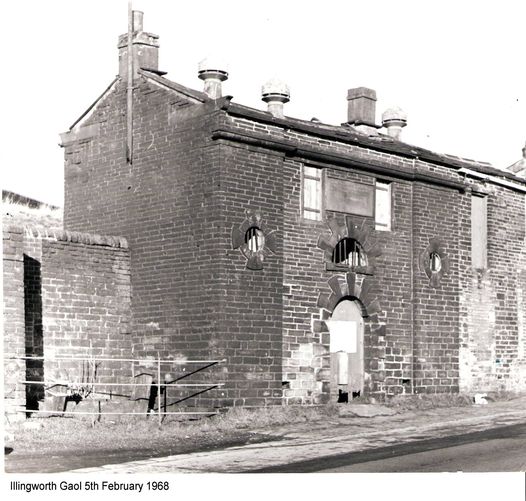
As the caption makes clear, this is Illingworth Gaol and the photo was taken on February 5th 1968. In fact, the picture shows more than just the gaol as it also includes the Illingworth stocks behind the railings in the bottom left-hand corner.
In fact, the stocks came into being much earlier than the gaol. They were erected way back in 1697 whereas the gaol was built, by the local church, in 1823.
The gaol’s life was not particularly long and in 1860 the building was passed to the local Co-operative Society for them to use as storage space. Illingworth Co-Operative Society, just around the corner a bit further up Keighley Road, bought the building in 1899 and during the 1930s the two Co-Ops merged.
The gaol was awarded ‘Grade 2 listed building’ status back in 1954 but in the years that followed, nobody wanted the building and it was allowed to fall into disrepair. The Co-Op tried to pass the gaol to the local council but this failed as nobody had any firm ideas about how to care for and preserve the building, which was upgraded to a Grade II listed building’ in 1978.
The property is currently looked after by the Illingworth Gaol and Stocks Preservation Group and they have a range of plans to re-open the place (for visitors rather than criminals). Check out their Facebook space and, if you get the opportunity to go to one of their open days, I would strongly recommend that you give it a go.
Tony Martin
In 1950, A dedication by means of a new war memorial window was unveiled at St.Johns church in West Vale.
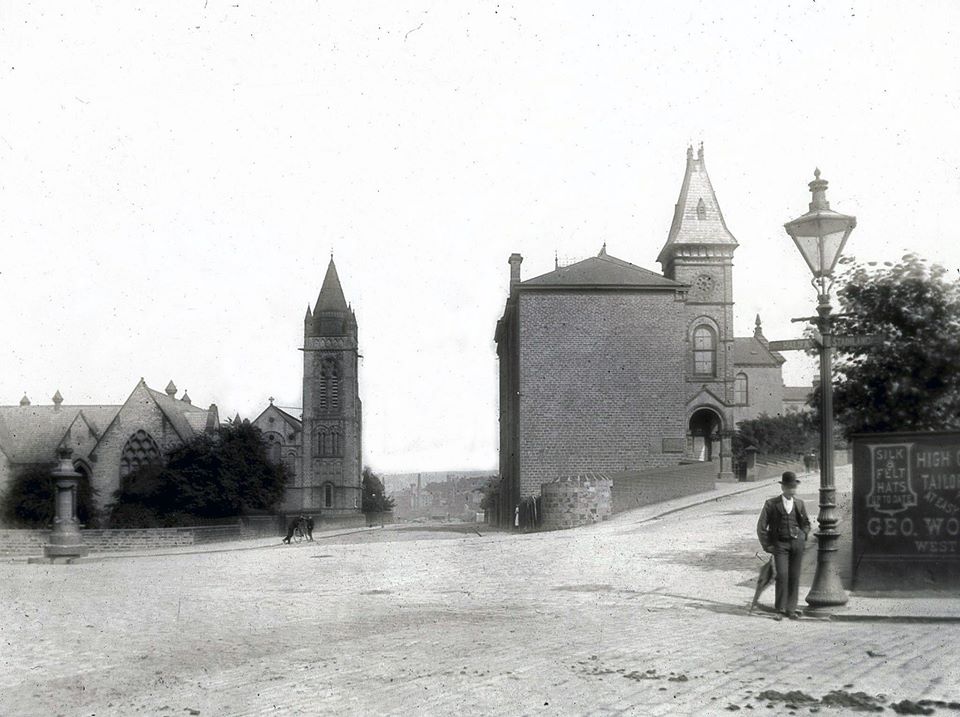
St.Johns, West Vale on the left
In 1941, Sowerby Bridge council decided against Sunday cinema opening
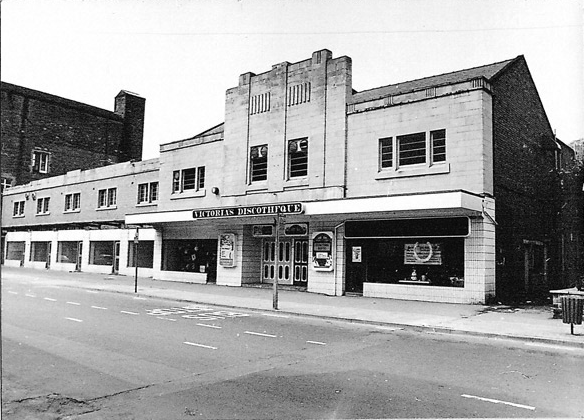
As well as the Roxy, Sowerby Bridge had the Regent Cinema, which became the Essoldo.
In 1933, Mr Bower's idea was reaching the world
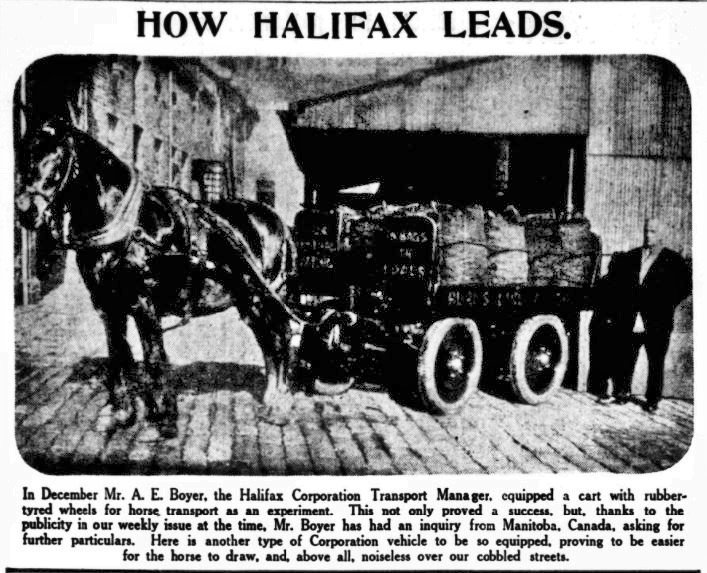
In 1928, Mytholmroyd was flooded and this has been a regular occurance throughout its history.
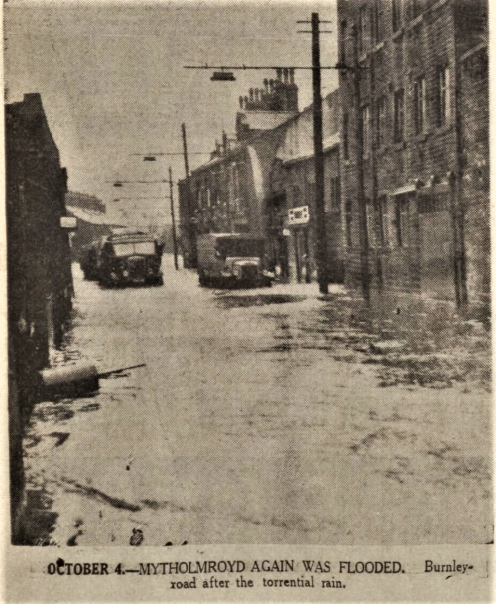 |
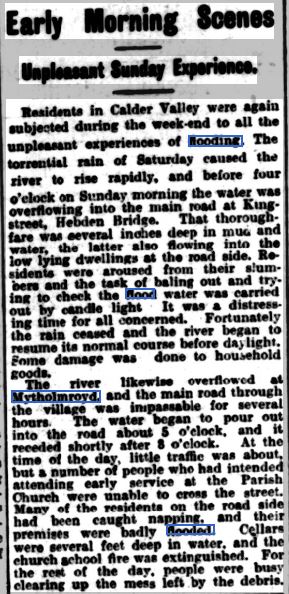 |
In 1919, the Mayor unveiled a granite water fountain at the Haley Hill Mills, Halifax, of William Hanson & Company, to the memory of employees who left the firm for military service. The mills were later known as Holroyds Mills.
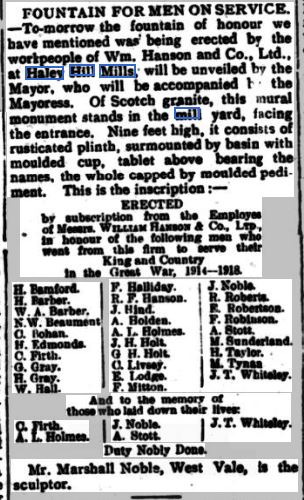
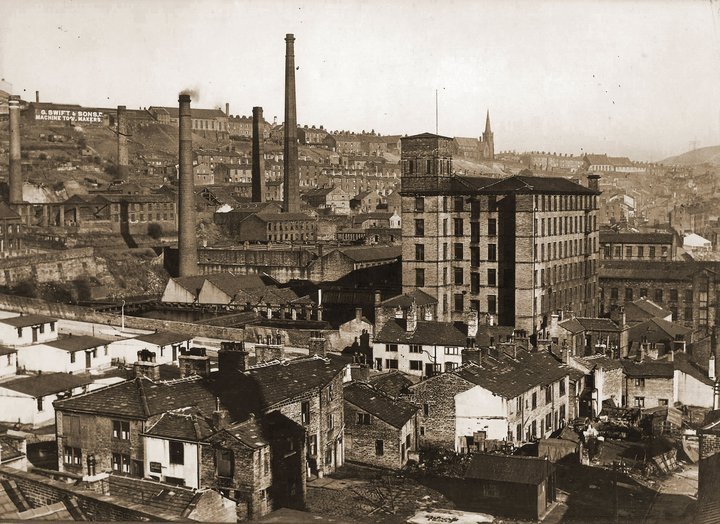
In 1912, the River Calder was frozen from Sowerby Bridge to Mytholmroyd
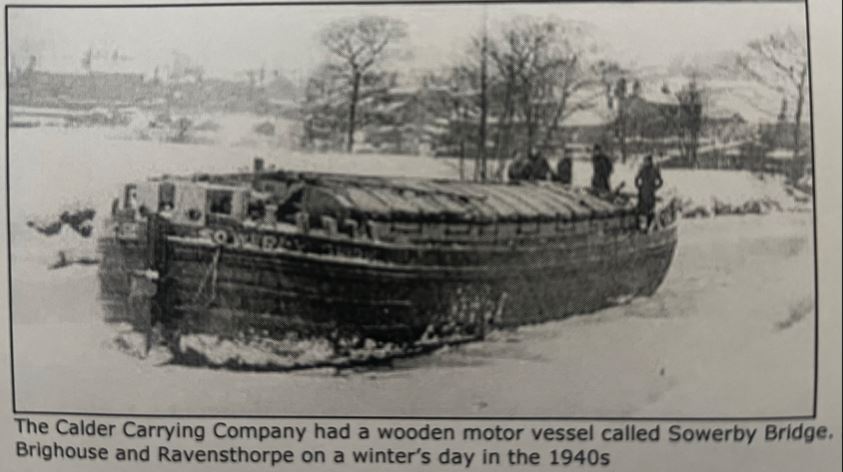
In 1851, Mr Ranger's sanitary inquiry was published. The conditions were so bad in some areas of Halifax that several houses were reported as unfit and were eventually pulled down.
The report makes fascinating reading.

A Calderdale Diary
The Assembly Rooms were also known as the New Theatre at the Talbot. This popular venue opened in the 1750's behind the Talbot Inn.
On 1st March 1814, the property was damaged by fire.
From 1818, meetings and rehearsals of the Halifax Quarterly Choral Society were held here and at other local Inns.
The New Assembly Rooms were built in 1824 on Harrison Road, so it seems this was either a guest appearance or they were using both venues.
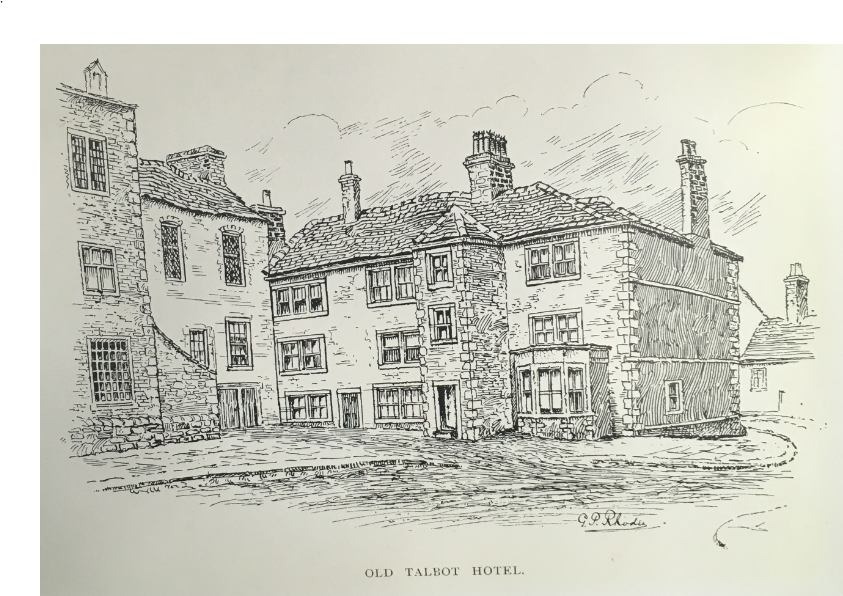
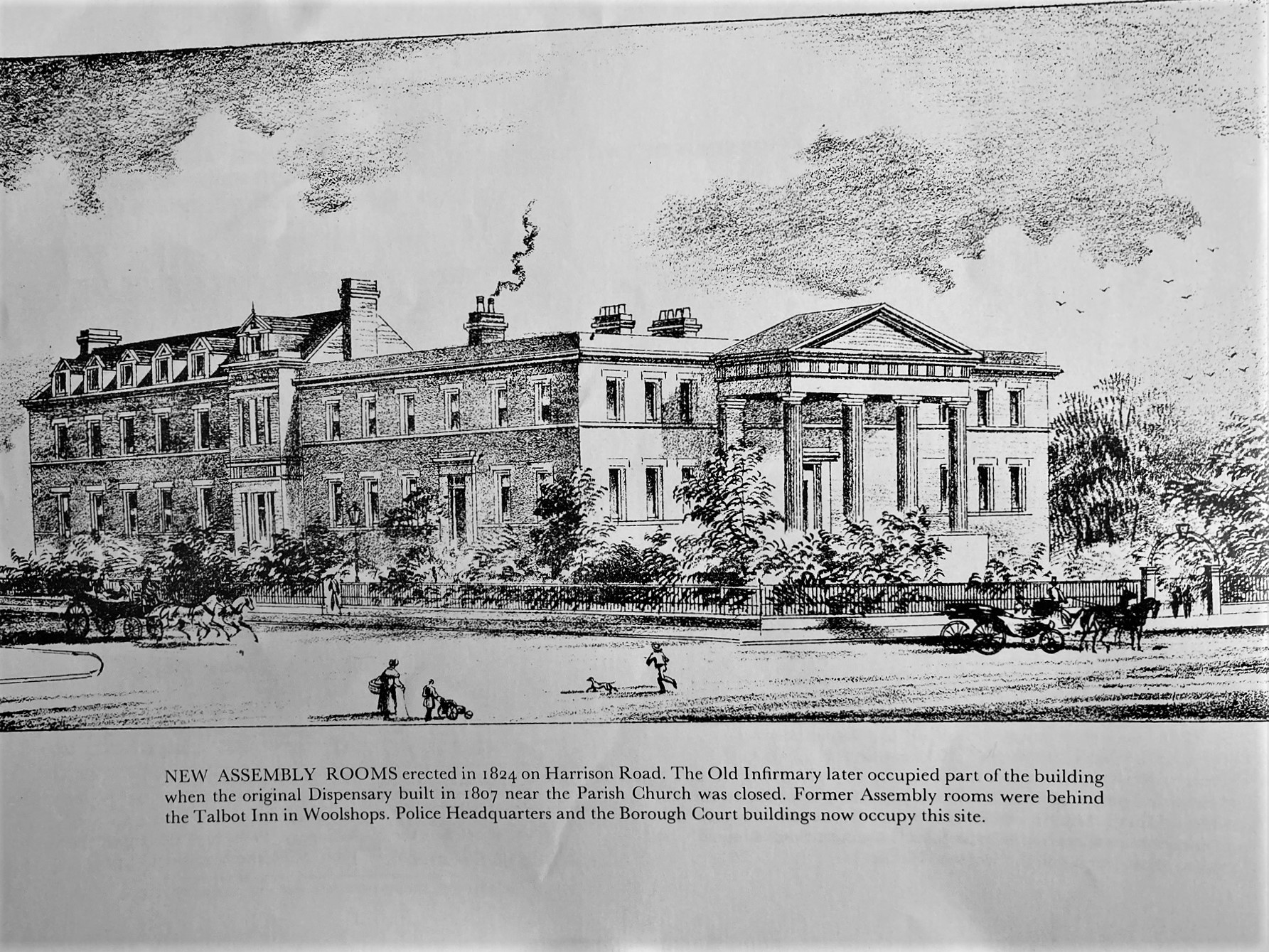
If you have enjoyed your visit to this website, please spread the word by clicking the 'like' and 'share' buttons below. Thank you
